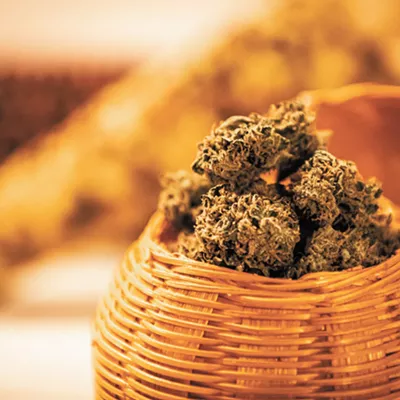Monday, August 24, 2015
More drivers test positive for THC; Seattle lawyer says legal limit unconstitutional
Last week we wrote about a Spokane Valley deputy's success rate when identifying drivers under the influence of marijuana. According to the deputy's own records (which he provided to the Spokane County Public Defenders Office, who shared them with the Inlander), he's wrong about half of the times he requests a blood draw from those he suspects are too stoned to drive.
Deputy Todd Miller says the Public Defenders Office and the Inlander interpreted his stats incorrectly, arguing that he's correct in closer to 80 percent of the cases.
As the article explains, the issue hinges on Washington state's per se limit for a marijuana DUI, which is 5 nanograms per milliliter of active THC in the blood (as opposed on inactive or "carboxy" THC, the stuff that sticks around in your fat cells). A per se limit is the point at which the law says "Yep, you're too high. You get a DUI." However, it is possible to be convicted of a DUI if you have less than 5 ng in your blood. The officer just has to prove you were too impaired to drive based on a standard field sobriety test.
But one lawyer in Seattle is arguing that 5 ng per se limit is a violation of the 14th Amendment's guarantee of due process. The per se limit established in the statute that legalized recreational marijuana in 2012, David Iannotti argues, is too vague for people to know if they're breaking the law.
"A statute must set forth clear legal standards so that citizens may know how to conduct themselves in conformity with the law, and law enforcement personnel may avoid enforcing the law in an arbitrary and discriminatory manner," he writes in a 29014 motion filed in King County. Spokane Public Defender Kendra Allen-Grant has since used Iannotti's argument in a trial of her own, but it didn't work.
Take alcohol, for example. When you blow into a Breathalyzer, it spits out a number that shows how much alcohol is in your blood. Additionally, information on how many drinks it takes to reach a certain level of drunkenness is widely available. There are charts, apps and what's known as Widmark's formula that tell a person when they are legally too drunk to get behind the wheel and therefore allowing them to knowingly obey the law. (Even if an app on your phone says you're OK to drive, it's still safer to get a ride.)
"It is not illegal to smoke marijuana and then operate a motor vehicle," Iannotti writes. "A violation has occurred only if a person operates a motor vehicle when their ability to drive is impaired by marijuana or they have a THC concentration of 5.00 ng/ml within two hours of driving."
But that doesn't mean go smoke two joints and then drive to the movies. (Maybe rent a movie and then smoke two joints on your couch.) According to statistics from the Washington State Toxicology Laboratory, the number of drivers who tested positive for active THC jumped from 18.6 percent in 2012 to 28 percent in 2014. The figure stands at 33 percent through April of this year, though the report doesn't say how much THC was found in the blood. It is possible for someone to have THC in their blood, but be fine to drive.
However, Shelly Baldwin of the Washington State Traffic Safety Commission tells NPR that 85 percent of blood samples collected from a fatal accident contained active THC, up from about 50 percent before legalization.
Tags: marijuana , DUI , Spokane Valley Police Department , Image















